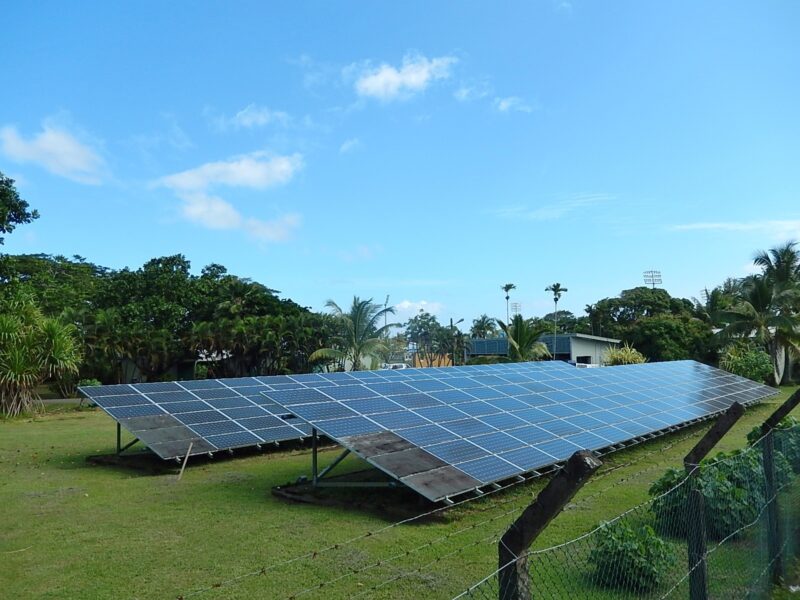In it for the long haul: Lessons in developing mid-century decarbonisation strategies
Eriko Shrestha, Raghuveer Vyas
The COVID-19 stimulus and recovery plans that governments put forward at this critical juncture present a unique opportunity to embed ambitious climate action into national sustainable development visions.
Share

2020 was set to be the “year of climate action”. But efforts have since focused on tackling the COVID-19 crisis, with the end of the global pandemic still nowhere in sight.
As the UN High Representative for Least Developed Countries (LDCs), Landlocked Developing Countries, and Small Island Developing States (SIDS), Ms. Fekitamoeloa ‘Utoikamanu, recently asserted, the climate crisis and responses to the pandemic must go hand-in-hand. While “short term now dominates action… we cannot allow the pandemic to divert our efforts on climate action,” she implored at an event organised by Climate Analytics. The COVID-19 stimulus and recovery plans that governments put forward at this critical juncture present a unique opportunity to embed ambitious climate action into national sustainable development visions.
This year is pivotal because countries are expected to submit their revised Nationally Determined Contributions (NDCs), and encouraged to communicate their Long Term Strategies (LTS). An LTS is a vision-oriented document that countries strive – but are not obliged – to formulate as part of the Paris Agreement. Its scope and aim are different from but align with the short-term and implementation-oriented NDCs that countries regularly revise and resubmit to the UNFCCC secretariat. At the time of writing, 19 countries have submitted an LTS, out of which five are LDCs or SIDS. Essentially, a Paris-compatible LTS has a time horizon up to 2050. It outlines a vision to peak greenhouse gas emissions around 2020, and reach net-zero CO2 emissions by 2050.
NDCs and LTS must now be grounded in the context of the pandemic so that global leaders pursue short-term economic goals, like job creation, in harmony with the longer-term goal of limiting the global average temperature increase to 1.5℃. An LTS is a critical tool for the alignment of short-term goals expressed in the NDCs with longer-term national and international climate ambitions, especially those outlined in the Paris Agreement of achieving climate resilience and net-zero emissions by 2050. Climate Analytics is well-placed to support LTS formulation, especially as it already provides support for revision of the NDCs.
Aligning NDCs with an LTS can catalyse untapped synergies. An LTS can increase clarity with respect to a country’s development trajectory, as well as the financial support that they would need. It thus provides clear policy signals and national planning horizons for the private sector and foreign investors for longer-term investments in the transformation of energy systems. If developed in silo, the NDCs’ five-year revision cycle can be inadequate for developing and implementing projects that are transformational and adequately respond to the slow-moving nature of climate change. On the technological front, scaling up energy technology like geothermal, and exploring untested innovations like Ocean Thermal Energy Conversion for renewable energy and carbon sequestration, will require financial support for research and development, which will only be possible with a long-term approach. Long-term planning also enables countries to develop action-based targets, such as the electrification of vehicle fleets, their NDCs.
If countries can reap so many benefits from articulating an LTS, why haven’t more of them done so? SIDS and LDCs are among the most environmentally, politically and economically vulnerable states, confronting a multitude of uncertainties for long-term planning. Their resources for preparing and communicating the documentation stipulated by the Paris Agreement may be thinly spread, and so they may lack the technical expertise to fulfil, for example, the Agreement’s transparency and accountability requirements. With the five-year cycle framework of NDCs largely shaping national climate action and activities, these countries may also find it difficult to access funding mechanisms for larger projects. Considering the circumstances facing the countries that Climate Analytics supports, we will share three key lessons learned in formulating an LTS below.
First, there is no single approach to developing an LTS. It can be a living document that is reviewed and updated periodically based on new scientific information and technological breakthroughs. It could also be enshrined in national law so that progress in achieving its targets continues even as subsequent administrations change. An effective LTS is grounded in existing strategies, policies and law. With staff and associates from various SIDS and LDCs, Climate Analytics is well-placed to understand the local context of the countries with which we work, tailoring the analysis of national climate and sectoral policies to the circumstances of individual countries.
Second, an LTS can reduce costs and increase efficiency. If developed in parallel with the NDC revision process, there are time savings to be made in data collection, modelling and stakeholder consultations. Once an LTS is in place and the data and processes centralised, these efficiencies and reductions in costs can also manifest in future NDCs revision cycles; subsequent NDC revision processes can have a lighter workload. As an organisation that provided technical assistance to countries in developing their first NDCs – and now their second NDCs – Climate Analytics is well-placed to assist countries in finding synergies between an LTS and NDCs. Furthermore, our science-based assessment of NDC mitigation and adaptation targets, including the use of energy and transport system models, can put a number on the financial investment required to fulfil an LTS.
Lastly, monitoring and evaluation are key to ensuring that a country is on track to achieve its NDC targets, support the Global Stocktake, and achieve its LTS. Stakeholder consultations are therefore essential for the LTS process to be country and stakeholder-driven, and outlast individual administration terms. Through engagement with stakeholders in-person prior to COVID-19, and now virtually, our implementation strategies team has vast expertise in this area. Climate Analytics has developed tools and delivered training for awareness-raising and capacity building, thus enhancing country ownership over future related activities. The only way to make key emission sectors – such as energy, industry and agriculture – compatible with the long-term temperature goal of the Paris Agreement is to bring major stakeholders on board and forge joint ownership of a long-term vision for achieving it.
Climate Analytics’ Senior Policy Analyst Dr. Jan Sindt, stated during the same event, “What we are seeing is many NDCs are now trying to work with rather smaller-scale projects simply because they do not have the capacity and time to develop something that is more transformative on a larger scale.” In summary, an LTS can help to identify such shortcomings as well as any financial and technical gaps. A strategy indicating long-term commitment to decarbonisation is also an asset for attracting investments. It is a tool that can help connect past and future NDCs, and expand the possibilities and opportunities for a country to develop its own long-term decarbonisation vision for itself.
Header image: Solar panels, Fiji — Michael Coghlan, Flickr, CC BY-SA 2.0 DEED












